#Roman Emperor Augustus
Text
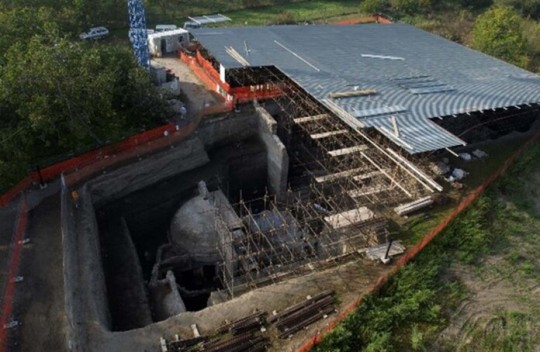
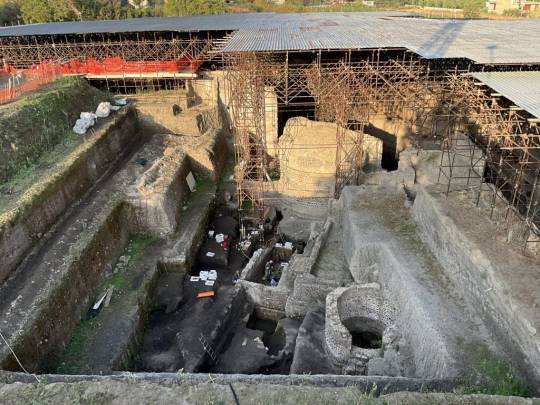
Archaeologists May Have Found the Villa Where the Roman Emperor Augustus Died
Excavations north of Mount Vesuvius revealed Roman ruins buried by the eruption in 79 C.E.
After decades of excavations in Italy, archaeologists have discovered a villa that could have belonged to Augustus, the first emperor of Rome.
Since 2002, researchers from the University of Tokyo have been exploring Somma Vesuviana, an archaeological site north of Mount Vesuvius, the volcano that extinguished the ancient city of Pompeii in 79 C.E. Recently, these excavations revealed a structure destroyed by the same eruption.
Researchers think this site could be Augustus’ lost villa. According to the team, Roman sources say Augustus died in a villa north of the mountain in 14 C.E., but the building’s location has never been verified.
“There is a description that [the villa] was consecrated … but its existence has not been identified to this day,” says Mariko Muramatsu, leader of the university’s Somma Vesuviana excavation project, in a translated statement. “In recent years, our excavations have uncovered parts of buildings that were buried during the eruption of Mount Vesuvius in 79 C.E. This means that for the first time in this area, a building contemporary with the villa of Emperor Augustus has been found with scientific support.”
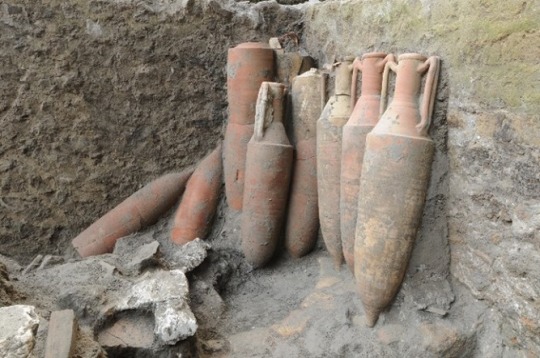
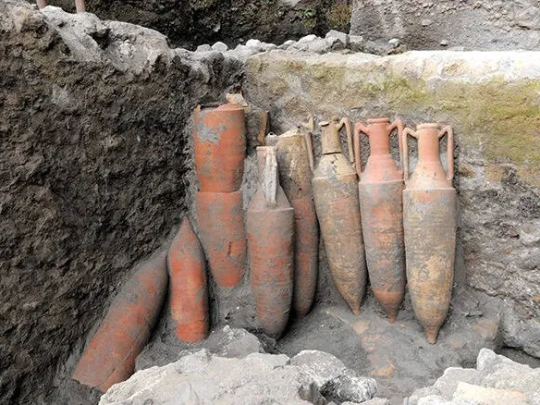

The ruins in question actually include two separate villas: one buried in the 79 C.E. eruption and another built on top of it later, reports All That’s Interesting’s Amber Breese. Until recently, researchers had only been aware of the newer structure.
In the older villa, archaeologists identified four rooms containing portions of wall, roof tiles and other ruins. In one chamber, researchers discovered 16 amphorae—tall ancient Roman jars—which were used to transport and store wine. In another, they found “large amounts of charcoal and ash” from a fire they believe was used to heat water for a private bathhouse, “indicating that the villa belonged to a person of great wealth and influence,” per All That’s Interesting.
In the mid-second century, people began constructing new buildings atop the site of the buried villa, using its footprint as a guide. The new construction featured a grand hall filled with brick arches, marble columns and marble statues. Around the fourth century, the site transformed again, becoming a large-scale wine production site. This villa was preserved by another eruption of Mount Vesuvius in 472.
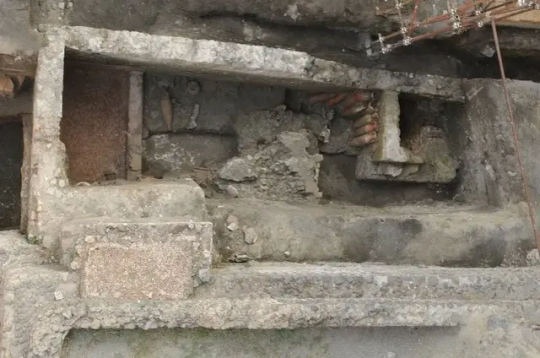


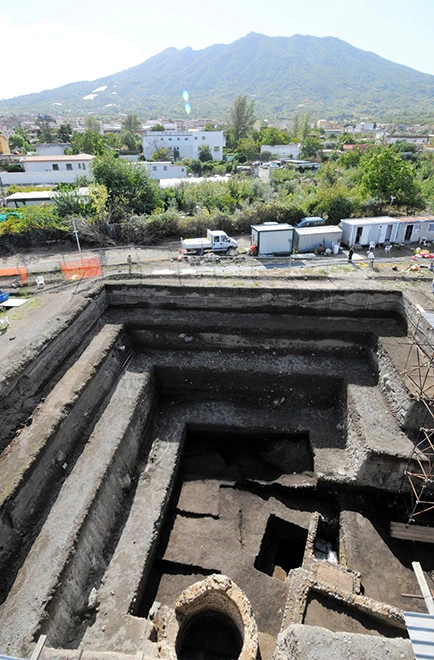
Historians previously thought the damage from Vesuvius’ 79 C.E. eruption at this site was “minor compared to the southeast of the mountain,” but the older villa’s ruins suggest “there was also a destructive impact in this area,” reports La Brújula Verde’s Guillermo Carvajal. Researchers think the structure collapsed due to pyroclastic flows—dense, fast masses of ash and gas expelled by the volcano.
The researchers theorize that Augustus could have once occupied the older villa. Born Gaius Octavius Thurinus, the young man was granted the name Augustus—the “exalted one”—by the Roman Senate in 27 B.C.E. While Augustus didn’t use the title of “emperor” in his lifetime, he was a pivotal figure in Roman history who more than doubled the empire’s size during his 40-year reign.
Researchers from the Somma Vesuviana excavation project hope to expand the scale of their digs. As Muramatsu says in the statement, further exploration could reveal “another Pompeii,” helping historians “trace the achievements of Emperor Augustus and the beginnings of the Roman Empire.”
By Sonja Anderson.
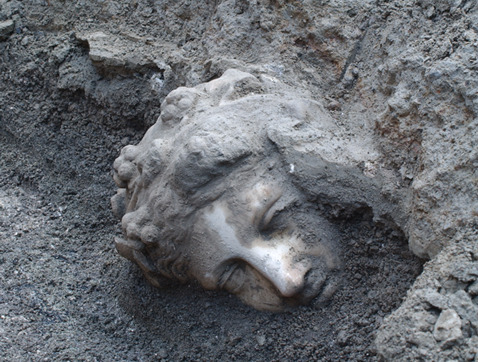
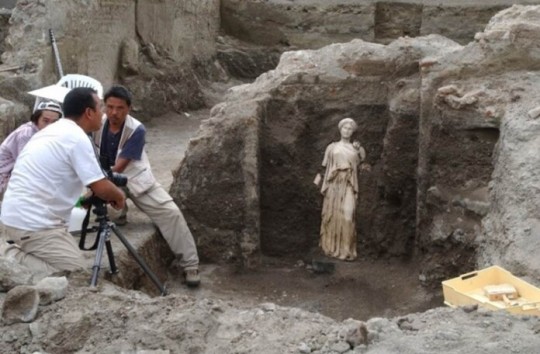
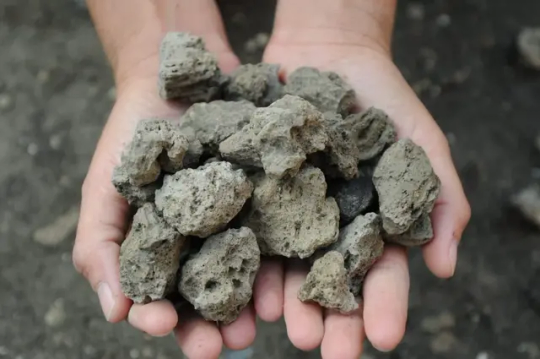
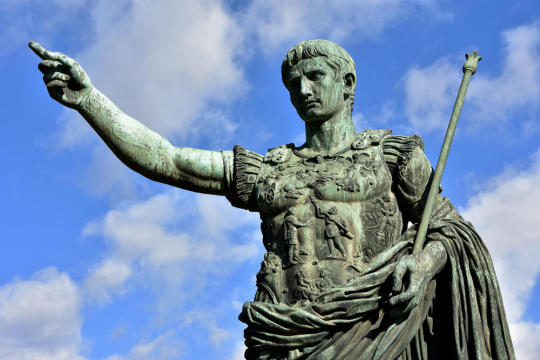
#Roman Emperor Augustus#Archaeologists May Have Found the Villa Where the Roman Emperor Augustus Died#Somma Vesuviana#Mount Vesuvius#ancient artifacts#archeology#archeolgst#history#history news#ancient history#ancient culture#ancient civilizations#roman history#roman empire#roman emperors#roman art
129 notes
·
View notes
Text
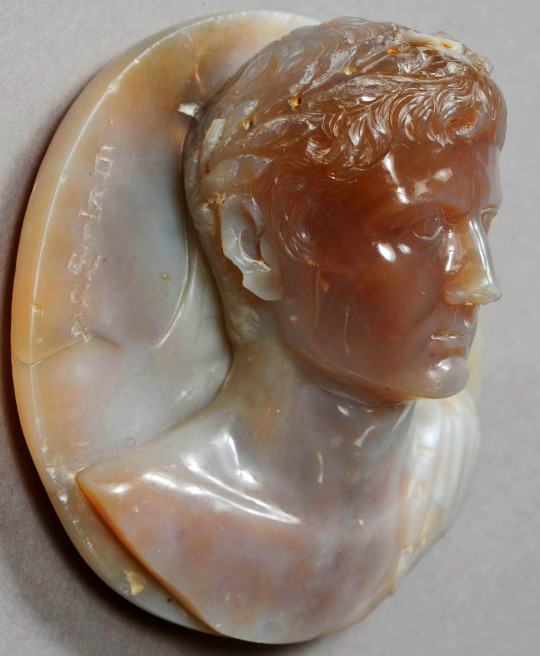
Cameo of the Emperor Augustus. It used to be decorated with a golden laurel wreath.
1K notes
·
View notes
Text









“Marmoream relinquo, quam latericiam accepi”
— Augustus, First Roman Emperor
#ancient rome#augustus#classics#roman empire#roman emperor#emperor#roman#rome#italy#roma#gaius octavius#aesthetic#academia#latin#quote#ruler#city#daily#literature#classic academia#classic literature#academia aesthetic#books#moodboard#architecture#roman architecture#ancient roman art
161 notes
·
View notes
Text
The Fifth Day of Julius Caesar
The Augustus of Prima Porta does not depict Julius Caesar. Sure, it depicts a Julius Caesar, but not the one that people always think this statue is.

(good jolly I did not know the augustus of prima porta was barefoot this is vile)
This is not just a Julius Caesar problem. I've seen people call this statue Claudius. I've seen people call this statue Drusus. I've even seen people call this statue Nero. It seems to me that the Augustus of Prima Porta is seen as just a symbol of a Roman with power, which is actually pretty interesting if you think about it.
This is not just an Augustus of Prima Porta problem either. Augustus is just always confused with Julius Caesar! You guys should see those lazy YouTube shorts about Julius Caesar... if it isn't an AI generated image, it's Augustus!

That's not Julius Caesar but good try tho <3
#the 15 days of julius caesar#julius caesar#emperor augustus#ancient rome#roman history#history#ides of march
258 notes
·
View notes
Note
So, what now when Ceasar is dead?
Caesar 2: Augustus Boogaloo

699 notes
·
View notes
Text
A brief summary of the Julio-Claudian Dynasty
Octavian/Augustus - he has a reputation associated with peace but you will get a little ill once you look at all the collateral damage around him and that reputation ie. It's easy to institute a regime of peace when you've murdered everyone who might oppose you
Tiberius - when a chronic people pleaser finally get into a position of power and still no one thinks they're good enough and they finally reach burnout and fuck off to their vacation home indefinitely
Caligula - the first emperor in the long litany of reasons why people whose brain has not fully developed should NOT be given access to unlimited power. Little Boots is either insane or the absolute champion at taking the piss out of the elite and there isn't really a third option
Claudius - an icon for overcoming disability and bullying and knowing how to delegate administration appropriately. Also this man gave his wives a lot of mobility (for the time) so we stan in spite of the sources trying to smear him for that very thing. Also this man was SUCH a nerd and I wish they hadn't destroyed his history of the Civil Wars but that's the Augustan propaganda machine for ya even near kin isn't safe from censorship
Nero - take one traumatic childhood add a flare for the dramatic and then give them unlimited power before their brain is fully developed and now it's like Caligula but with more pizzazz. Nero is literally what happens when that obnoxious rich kid who's into theater gets absolutely unlimited money and power and nothing to curtail his flare for a spectacle.
#roman history#ancient rome#roman empire#how often do you think about the roman empire#julius caesar#ancient history#caesar#augustus#tiberius claudius nero#julio claudian dynasty#julio claudians#Tiberius#emperor caligula#caligula#claudius#i claudius#little boots#Capri#Octavian#Octavianus#Nero#ahenobarbus
72 notes
·
View notes
Text
Octavius & Jedediah aka Jedtavius
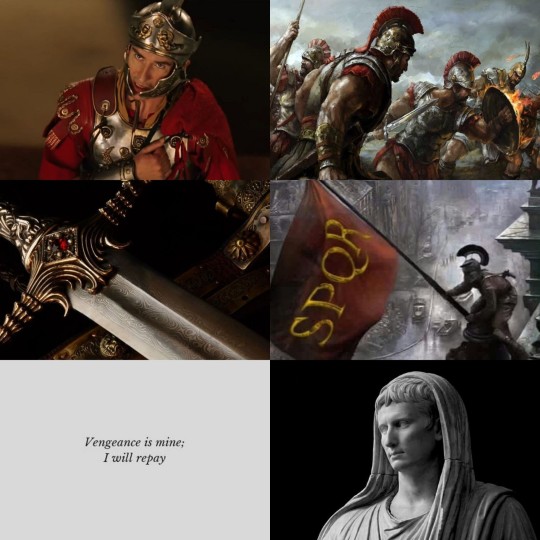

#jedetavius#night at the museum jedediah#jedediah and octavius#jedediah smith#jedtavius#natm jedediah#natm octavius#octavius#natm jedtavius#natm#natm fandom#headcanon: octavius is augustus caesar#aesthetic#moodboard#roman emperor#ancient rome#roman empire#cowboy#night at the museum
78 notes
·
View notes
Text


#beware the ides of march#IM RAISING MY HAND YOU JUST CANT SEE IT#julius caesar#brutus#mark antony#caesar augustus#emperor augustus#cassius#roman empire#ancient rome#history
52 notes
·
View notes
Text
ANCIENT ROME FAMILY TREES !!
(that I've written down so far)
- THE JULIOCLAUDIANS (until Claudius, sorry Nero! - starting from Brutus' ancestors)

- MARCELLUS AND HIS FAMILY (down to Messalina!)

- THE FAMILY OF AELIUS SEJANUS (the only one whose family isn't a circle)
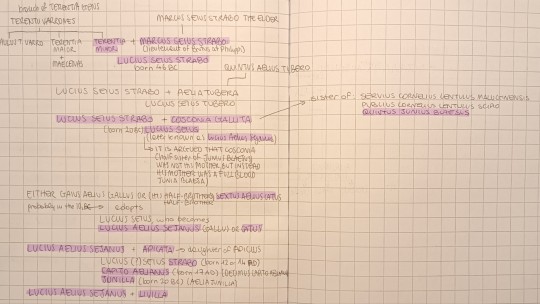
#absolute insanity#silly#family trees#marcus junius brutus#ancient rome#roman empire#roman republic#julio claudian dynasty#octavian#augustus#lucius aelius sejanus#caligula#i lost my mind#valeria messalina#tiberius#roman emperors#julia the elder#agrippa#agrippina#uhhhhhhh#will update more#PLEASE i sweat and lost my neurons over this#cato the younger#:3#ides of march#julius caesar
62 notes
·
View notes
Text
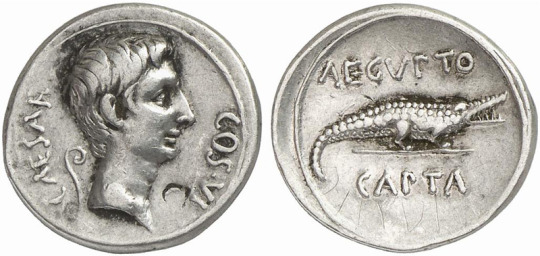
Silver denarius minted at Rome or Brundisium between 29 and 27 BCE by Julius Caesar's adopted son Octavian, soon to become Augustus. The denarius celebrates Octavian's conquest of Egypt following his (or, rather, Marcus Agrippa's) naval victory over Antony and Cleopatra at Actium. On the obverse, the bust of the young Octavian, with a lituus (ritual staff) showing his membership in the college of augurs; on the reverse, a crocodile surrounded by the inscription AEGYPTO CAPTA ("Egypt [having been] captured"). Beneath the inscription is a graffito from an unknown source. Photo credit: Classical Numismatic Group, Inc. http://www.cngcoins.com
#classics#tagamemnon#ancient history#Ancient Rome#Roman Empire#Roman history#Octavian#Augustus Caesar#Emperor Augustus#art#art history#ancient art#Roman art#Ancient Roman art#Roman Imperial art#coins#ancient coins#Roman coins#Ancient Roman coins#denarius#numismatics#ancient numismatics#metalwork#silver#silverwork
364 notes
·
View notes
Text

The Octavianus Fragrance: for a price you can barely afford, you too can smell like sickness and desperation!
#octavian#augustus#agrippa approves tho#roman empire#roman emperors#roman history#ancient rome#tagamemnon#agrippa#history shitposting#history memes#bad jokes Sunday
52 notes
·
View notes
Photo

Blacas Cameo of the Roman Emperor Augustus
c. 14 CE
Made from a brown and white three-layered sardonyx, he wears the aegis of Minerva and a sword-belt.
🏛️@britishmuseum
#Blacas Cameo of the Roman Emperor Augustus#c. 14 CE#jewelry#ancient jewelry#ancient artifacts#archeology#archeolgst#history#history news#ancient history#ancient culture#ancient civilizations#ancient rome#roman history#roman empire#roman emperor#roman art
754 notes
·
View notes
Text

He was very tall and extremely pale, with an unshapely body, but very thin neck and legs. His eyes and temples were hollow, his forehead broad and grim, his hair thin and entirely gone on the top of his head, though his body was hairy. Because of this to look upon him from a higher place as he passed by, or for any reason whatever to mention a goat, was treated as a capital offence. While his face was naturally forbidding and ugly, he purposely made it even more savage, practising all kinds of terrible and fearsome expressions before a mirror.
Suetonius: Life of Caligula
It's probably the empty eye-sockets that do it but I have always felt that this cast bronze portrait captures the spirit of Caligula, the mad emperor as the stories paint him. I wouldn't say he was ugly though, Suetonius.
#his marble busts make his looks softer imo#caligula#gaius julius caesar augustus germanicus#emperor gaius#gaius caligula#ancient rome#roman empire#ancient history#julio claudian dynasty#ancient art#bronze bust#ancient civilisations#bronze sculpture#suetonius
156 notes
·
View notes
Text
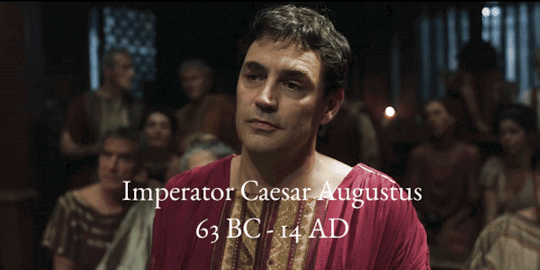


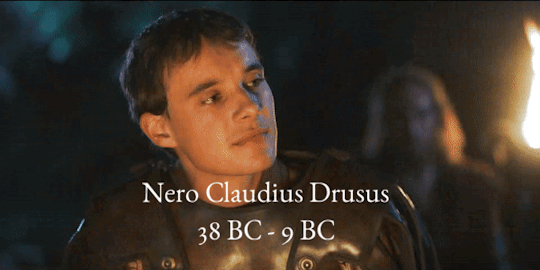
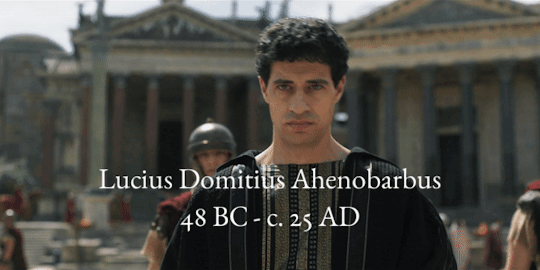

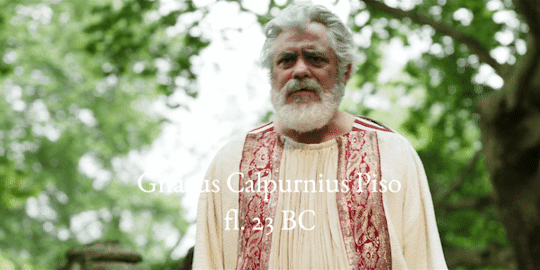
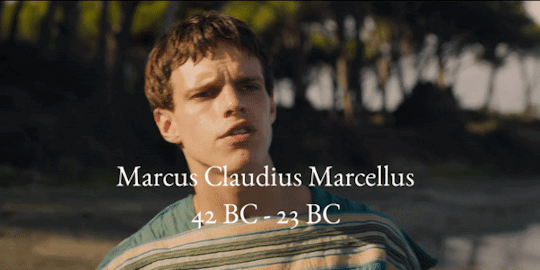
Historical Male Characters in Domina (2021)
#domina sky#domina mgm+#domina tv#caesar augustus#emperor augustus#agrippa#marcus agrippa#tiberius#tiberius claudius nero#nero claudius drusus#drusus the elder#lucius domitius ahenobarbus#iullus antonius#gnaeus calpurnius piso#marcus claudius marcellus#julio-claudian dynasty#julio claudian dynasty#ancient rome#roman history
83 notes
·
View notes
Text

Nero as Antigone 🩸
#my art#dedicated to the three nero enthusiasts on tumblr you know who you are#this is an interpretation by the way‚ i don‘t know if he ever acted the particular play#emperor nero#lucius domitius ahenobarbus#nero claudius ceasar augustus germanicus#roman history#ancient greece#antigone#oh i will definitely draw antigone herself at some point#reference from adorkastock#ancient rome#sophocles
165 notes
·
View notes
Text

Roman Emperors: Augustus – Gordian I
27 BC – 238 AD
Excited to be working on these again! The series is nearing completion! Pride edition will follow shortly…
#roman emperor#roman empire#rome#history art#ancient rome#1st century bc#1st century#2nd century#3rd century#julio claudian dynasty#augustus#caligula#emperor nero#flavian dynasty#domitian#nerva antonine#marcus aurelius#trajan#hadrian#commodus#geta#caracalla#severan dynasty#elagabalus#digital art#roman tag
17 notes
·
View notes